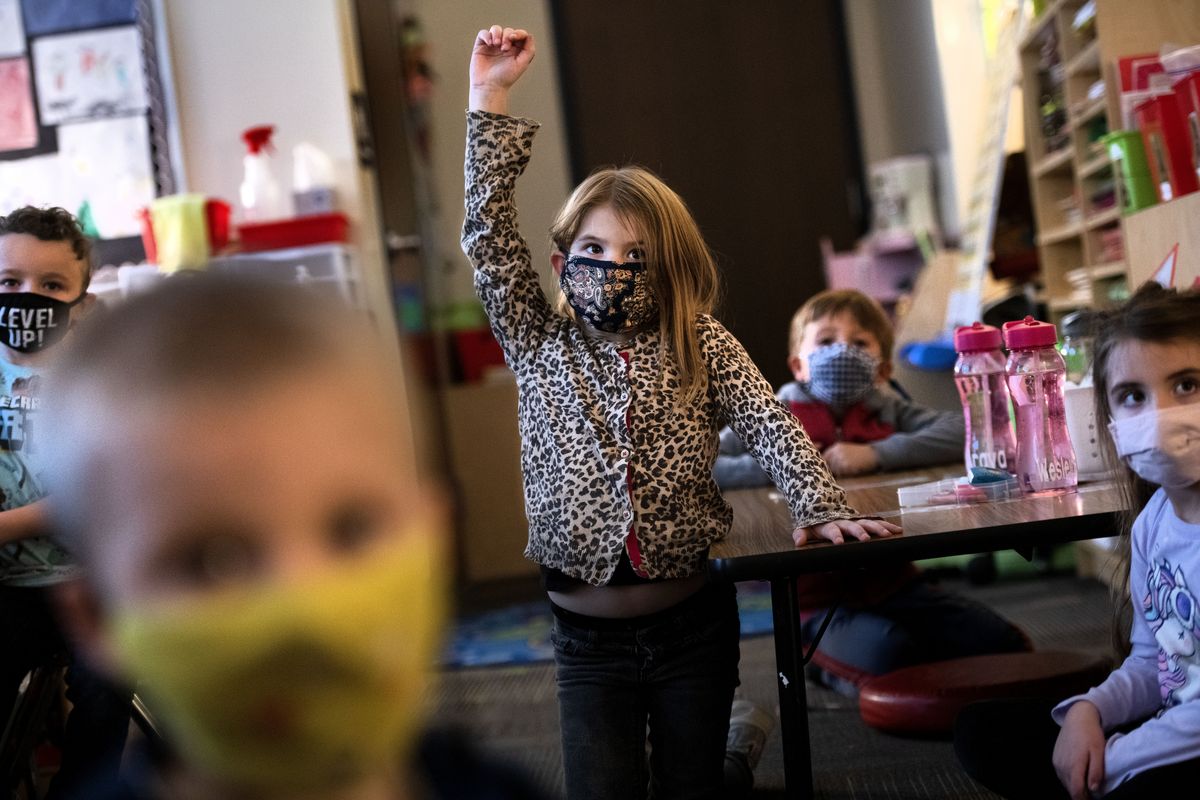Study: Risk of getting COVID-19 in school can be greatly reduced

Schools in communities with lower rates of COVID-19 could have K-12 students return to school with relatively low risk if they follow certain health and safety procedures, a new report suggests.
The study conducted by the Institute of Disease Metrics said reopening schools without what it calls “countermeasures” against the virus can result in significant infections. As many as 45% of the staff and 33% of the students could be infected in the first month.
With those countermeasures – which include masking, social distancing, routine diagnostic screening and testing – the risk of infection over the first three months back is greatly reduced.
It could drop to 2.3% or less for a five-day, in-school schedule. For hybrid schedules involving some days in school and some at home or K-5 phased-in approaches, the risk drops to about 1%, which was not significantly different from when schools are closed and students are learning at home.
Lower risk does not mean no risk, said Daniel Klein, senior research manager at the institute and one of the authors of the report. “There is no zero-risk scenario.”
There were some differences in risk based on school size, because larger schools have a higher probability of having an infected person attending on the first day of class without knowing they’re contagious. That can be reduced with screening and testing a week before school starts, he said.
Before reopening schools for in-person learning and implementing school-based countermeasures, it’s important to reduce transmission of the coronavirus within the community, the report says.
The study was conducted in King County, which has about 75 new cases per 100,000 people over a two-week period. That’s about a third of the current rate of new cases in Spokane County.
In communities with a higher rate of new cases, schools could expect their level of cases to increase as well, Klein said.
In an email, Sandra Jarrard, spokeswoman for Spokane Public Schools, said the district is “in the process of reviewing the study and looking forward to discussing it with public health officials to determine the implications it might have for the future of our planning.”
The district is in constant contact with the Spokane Regional Health District and the state Department of Health, Jarrard said, adding “We will wait for their guidance for any future planning.”
Lacy Fehrenbach, the state’s deputy secretary of health for COVID-19 response, said the Department of Health is concerned about the rise in cases across the state.
“The risk of COVID being transmitted in the school environment increases as the activity level and disease burden of COVID increases in the surrounding community,” she said.
When cases are rising, it’s not an ideal time to expand in-school learning, she said.
But looking across the U.S., communities with rates higher than Washington have brought students back for in-person learning. Their experiences support the importance of the health and safety measures in the study, Fehrenbach said.
“The risk is lower for children who are younger. Nationally, there are fewer cases and lower transmission among elementary school students and fewer outbreaks,” she said.
To get older students back to school, communities will have to work to drive down their rates by individuals making choices about what they do, limiting social interactions, with safer, smaller gatherings, Fehrenbach said.
Here’s a look at local numbers as cases continue to surge in the Inland Northwest:
The Spokane Regional Health District confirmed 117 new COVID-19 cases, and one more death from the virus on Thursday.
There are 61 patients in Spokane hospitals receiving treatment for the virus, and 45 of them are county residents.
The Panhandle Health District also confirmed 117 new COVID-19 cases on Thursday, and 49 residents from the five-county region are hospitalized.
Kootenai Health is caring for 46 of those patients, with 14 receiving critical care.